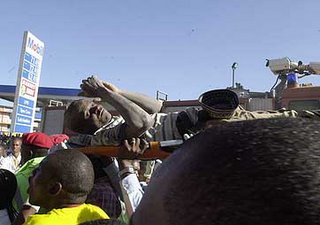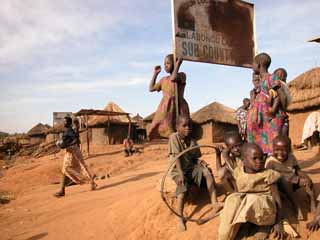
Disaster struck at noon. Dozens of construction workers were having lunch or napping after working for some six hours at a five-story building when the structure shook and collapsed, trapping many in a concrete-and-steel tomb in downtown Nairobi.
I arrived at the site shortly after the collapse and saw hundreds of street vendors, shop keepers, the unemployed, passers by and others rush to the rubble and use their bare hands, crow bars, sledgehammers and other primitive equipment to free some of the victims from the dusty tomb.
People desperately shouted the names of friends and relatives through drainage pipes and holes cut through the concrete. A victim pushed an arm through the rubble and asked for help, saying that a colleague was pinned on the legs by a massive concrete slab nearby.
Thus began the latest man-made tragedy to hit this East African nation, in the afternoon of Monday, Jan. 23, 2006.
The disaster was a product of corruption and incompetence at the City Council of Nairobi as well as greed by owners of the ill-fated building. On day four, troops lit a memorial flame at the site to mark the end of efforts to rescue possible survivors. Rescuers will now focus on recovering the remains of anyone still beneath the rubble.
Reports allege that owners rushed construction workers to put up new floors before concrete on the lower level had set properly.
Soon after the tragedy struck, Kenyan politicians made noises to the effect that the country has learned a lot from the latest tragedy.

The insincere comments apparently tested the patience of Kenya’s Chief of General Staff Lt. Gen. Jeremiah Kianga. He made that clear when he was given the microphone at the televised memorial service Thursday.
"This is not the first time that we are learning lessons, and we cannot be students forever," Kianga said.
Relatives have named 10 people whom they said were working at the site before the building collapsed and are now missing. More than 100 people were injured in the collapse. About 280 laborers were at the site in central Nairobi when the building came down, survivors said.
In May 1996, at least 16 people when the marquee of a building housing a supermarket and a photographic studio collapsed after a strong thunderclap and bolt of lightning. It was the last major building collapse experienced in Kenya's capital city and a report of an inquiry into the building's collapse has never been acted on.
There are fears that many buildings in Nairobi either being put up or already constructed in recent years have not been properly inspected because of rampant corruption in the City Council of Nairobi.
It remains to be seen whether anything will change following the latest tragedy.

